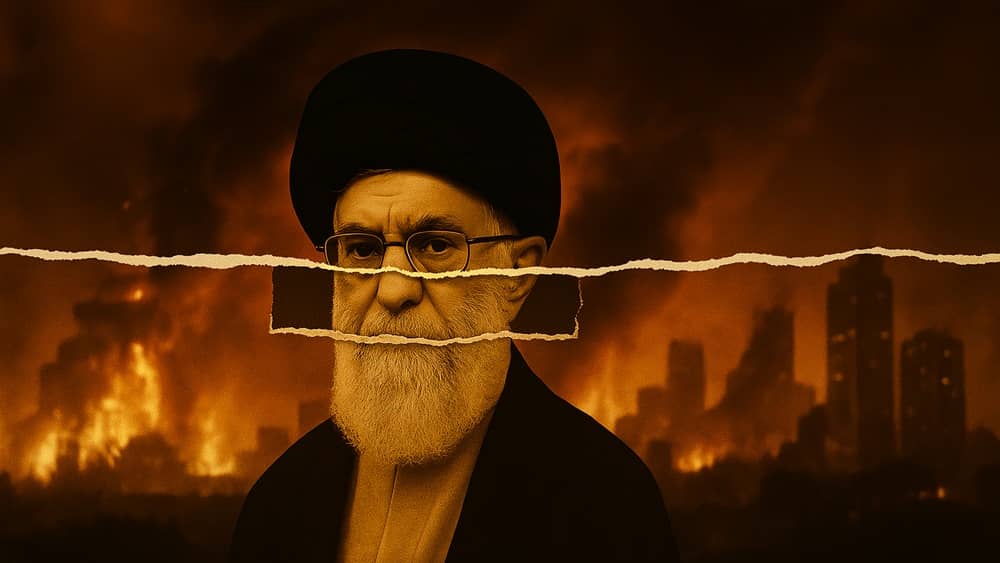Three-minute read
Factional conflict inside the Iranian regime once functioned like a pressure valve: when the system felt existential risk, elites muted their quarrels and rallied to survival. That reflex is gone. Under acute stress, they are fighting in public—and not over policy so much as over who survives a post-Khamenei order. The result is rupture, not reconsolidation.
We saw it plainly this week. Ali Larijani, now secretary of the Supreme National Security Council, warned that “some of the country’s political elders still do not grasp the sensitivity and gravity of the current moment” and are “easily brawling with each other,” urging them to “cross differences and strengthen national cohesion.” The appeal reads less like arbitration than alarm: a veteran insider telling the class that the house is on fire and they’re arguing over furniture.
The struggle is not about a new economic line or foreign-policy doctrine; it is about succession. As Khamenei ages, no agreed path or consensus successor is visible. That vacuum pulls every argument into the gravity well of who will speak for the state after him—and who will be silenced now.
A retrospective look into the #history of Khamenei's power-grabbing and the ferocious process of adsorption and desorption that enabled his position in #Iran's politics. https://t.co/WZ6tJu2lo8
— NCRI-FAC (@iran_policy) May 5, 2023
Two Drivers of Panic in the Ruling Class
First, the Raisi vacuum. After Ebrahim Raisi’s death, Khamenei was forced to rebalance rather than complete his “one-line” consolidation. He has effectively put Masoud Pezeshkian in the presidency and Ali Larijani at the national-security helm—two figures that infuriate the Paydari extremists and parts of the IRGC commentariat because Pezeshkian’s steady drumbeat about dysfunction demoralizes an already shrinking loyal base, and Larijani keeps telling the system to learn from prior governments instead of performing “blind resistance.”
Second, the return of sidelined power-brokers. Former president Hassan Rouhani has re-entered the arena. In a widely circulated clip carried by state media on October 23, 2025, he challenged the Majles’s representativeness—“What percentage of the people does this parliament represent?”—and argued that when “90 percent of people” oppose a measure (he was referring to the new hijab law), “that is not law; the spirit of such a law is corrupt.” For a figure once cast as a system-loyal manager, it was the opening move of a Rafsanjani-style bid to shape succession—an attempt to position himself not as an outsider, but as the broker of the next leadership arrangement.
They are not alone. Faezeh Hashemi intensified her long-running confrontation with the core of the state by stating in an interview published by Khabar Online on October 28, 2025, that her father, former President Akbar Hashemi Rafsanjani, was “assassinated internally,” pointedly rejecting foreign involvement—“it was an internal terror.” The timing matters: she is making the claim at a moment of visible regime disarray, when such an accusation extracts maximum political cost from the leadership and signals confidence that power balances are shifting.
NCRI Editorial: The Aftermath of Ebrahim #Raisi’s Death: A Turning Point for #Iran https://t.co/vg4DJ6746O
— NCRI-FAC (@iran_policy) May 20, 2024
And when Ali-Akbar Nateq Nouri—a pillar of the old right—called the 1979 U.S. embassy takeover a “big mistake,” state television responded by dredging up a 1993 speech to paint him back into orthodoxy. The meta-message was obvious: delegitimize today’s dissent by replaying yesterday’s loyalty. The story ran November 4, 2025.
Meanwhile Gholamhossein Karbaschi (ex-Tehran mayor) attacked the coercive turn on hijab enforcement as strategically self-defeating—“even eight million enforcers would have no effect”—and criticized budget flows to culture-war institutions, calling the moves contrary to Supreme National Security Council guidance. That interview published October 23, 2025, underscoring how figures with regime pedigree now frame the center’s priorities as threats to the system’s own stability.
Meanwhile Mahmoud Ahmadinejad remains in the system but outside obedience: a former president with factional networks and unresolved files, impossible to purge yet impossible to trust—another variable player in the succession field.
#Iran News in Brief
Today, August 6, at a ceremony attended by judges from the regime’s Supreme Court, Gholamhossein Mohseni Ejei, the head of the Judiciary, made some significant changes to the judiciary personnel. After serving the regime as the Prosecutor-General for seven… pic.twitter.com/5guqaEt39A— NCRI-FAC (@iran_policy) August 6, 2023
Why This Time Is Different
The judiciary continues to operate as the Leader’s enforcement arm, signaling to all factions that critique has criminal thresholds—even for insiders. It is less an institution of adjudication than a mechanism for managing internal obedience.
Khamenei has paid a steep price to keep the machine running: Pezeshkian and Larijani now sit at the steering wheel, despite being deeply disliked by the Paydari bloc and segments of the IRGC’s loyalist media. To parts of his own base, both remain symbolic defeats. Yet this is the price the Leader now pays to keep factions from breaking into open revolt. Larijani’s public warning that “some elders don’t understand the gravity of the moment” is evidence that even this balancing act is losing altitude.
All signals from inside the system point in the same direction: senior actors now operate on the assumption that Khamenei’s doctrine has failed—failed to consolidate a unified ruling bloc, failed to convert regional proxy investment into durable power, and failed to secure a nuclear posture that guarantees survival. The outcome is not a strategic reset, but a scramble for positioning in a post-Khamenei order.


